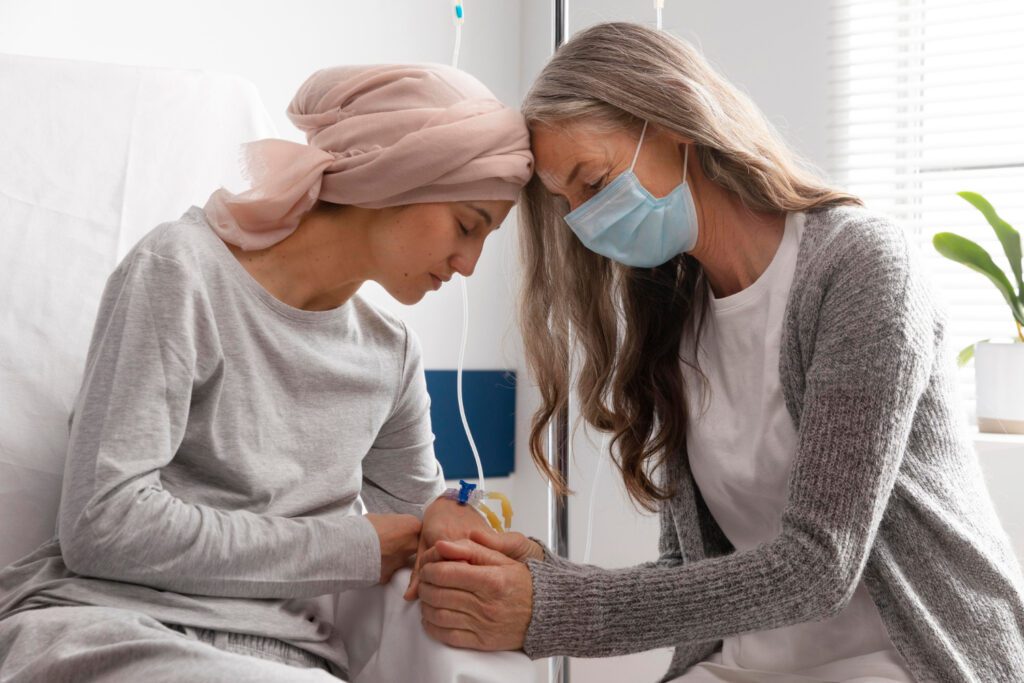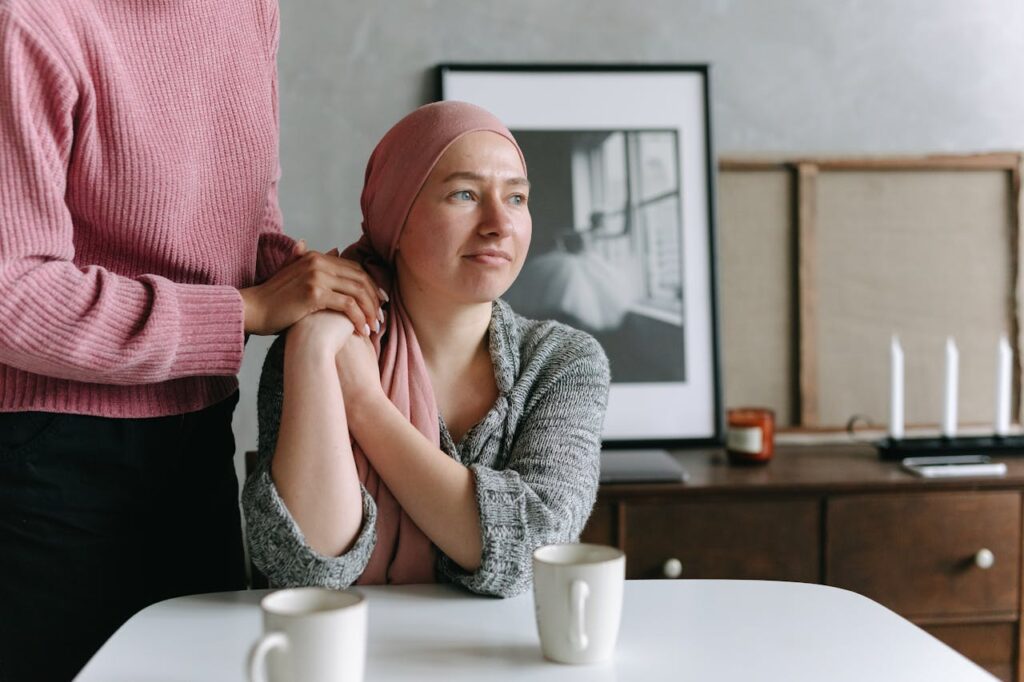Cancer is a group of diseases characterized by the uncontrolled growth and spread of abnormal cells in the body. According to the World Health Organization (WHO), cancer is a leading cause of death worldwide, accounting for nearly 10 million deaths in 2020. Understanding the different types of cancer is crucial for early detection, effective treatment, and overall cancer awareness.
Most Common Types of Cancer
Breast Cancer
Breast cancer is the most common cancer among women worldwide. Risk factors include age, family history, genetic mutations (such as BRCA1 and BRCA2), and lifestyle factors such as obesity and alcohol consumption. Symptoms may include a lump in the breast, changes in breast shape or size, and nipple discharge. Treatment options depend on the stage and type of breast cancer, but may include surgery, chemotherapy, radiation therapy, and hormone therapy.
Lung Cancer
Lung cancer is the leading cause of cancer deaths globally. The primary risk factor is smoking, but exposure to secondhand smoke, radon, and air pollution can also increase the risk. Symptoms may include persistent cough, chest pain, shortness of breath, and coughing up blood. Treatment options include surgery, chemotherapy, radiation therapy, and targeted therapy.
Colorectal Cancer
Colorectal cancer begins in the colon or rectum. Risk factors include age, family history, inflammatory bowel disease, and lifestyle factors such as a diet high in red and processed meats, obesity, and physical inactivity. Symptoms may include changes in bowel habits, blood in the stool, and abdominal pain. Screening tests, such as colonoscopy, can detect colorectal cancer early, when it is most treatable. Treatment options include surgery, chemotherapy, and radiation therapy. The American Cancer Society (ACS) provides recommendations for colorectal cancer screening.
Prostate Cancer
Prostate cancer is the most common cancer among men. Risk factors include age, family history, and race (African American men are at higher risk). Early-stage prostate cancer may not cause symptoms, but advanced stages may cause urinary problems, bone pain, and weakness. Treatment options include active surveillance, surgery, radiation therapy, and hormone therapy. The National Cancer Institute (NCI) offers more information on prostate cancer symptoms, stages, and treatment.
Skin Cancer
Skin cancer is the most common cancer in the United States. The main types are basal cell carcinoma, squamous cell carcinoma, and melanoma. Risk factors include exposure to ultraviolet (UV) radiation from the sun or tanning beds, fair skin, and a history of sunburns. Symptoms may include changes in the appearance of moles, freckles, or skin patches. Prevention includes protecting the skin from UV radiation and regular self-examinations. Treatment options depend on the type and stage of skin cancer, but may include surgery, radiation therapy, and chemotherapy. The Skin Cancer Foundation provides comprehensive information on skin cancer types, symptoms, and prevention.
Less Common but Notable Types of Cancer
Leukemia
Leukemia is a cancer of the blood and bone marrow. It is characterized by the rapid production of abnormal white blood cells. The ACS provides an overview of the types, symptoms, and treatment options for leukemia.
Lymphoma
Lymphoma is a cancer that starts in the lymphatic system, which is part of the body’s immune system. The two main types are Hodgkin lymphoma and non-Hodgkin lymphoma. The ACS offers information on the types, symptoms, and treatment options for lymphoma.
Pancreatic Cancer
Pancreatic cancer begins in the pancreas, an organ that lies behind the stomach. Risk factors include smoking, obesity, and a family history of pancreatic cancer. Symptoms may include abdominal pain, weight loss, and jaundice. The ACS provides more information on pancreatic cancer risk factors, symptoms, and treatment options.
Ovarian Cancer
Ovarian cancer starts in the ovaries, the female reproductive glands that produce eggs. Risk factors include age, family history, and certain genetic mutations (such as BRCA1 and BRCA2). Symptoms may include abdominal bloating, pelvic pain, and changes in bowel habits. The ACS offers more information on ovarian cancer symptoms, stages, and treatment options.
Thyroid Cancer
Thyroid cancer begins in the thyroid gland, which is located in the neck. Risk factors include exposure to radiation and a family history of thyroid cancer. Symptoms may include a lump in the neck, hoarseness, and difficulty swallowing. The ACS provides information on the types, symptoms, and treatment options for thyroid cancer.
Rare Types of Cancer
Rare cancers are those that affect a small percentage of the population. Examples include brain and spinal cord tumors, sarcomas (cancers of the bones and soft tissues), and neuroendocrine tumors. Rare cancers can be challenging to diagnose and treat, as there may be limited research and expertise available. Early detection and specialized care are crucial for improving outcomes. The NCI offers information on rare cancers, including types, challenges, and research efforts.


Risk Factors and Prevention
While some risk factors for cancer, such as age and family history, cannot be changed, there are many lifestyle factors that can be modified to reduce the risk of developing cancer. Some common risk factors across various types of cancer include:
- Tobacco use: Smoking and exposure to secondhand smoke increase the risk of lung, mouth, throat, larynx, pancreas, bladder, cervix, and kidney cancers.
- Obesity: Being overweight or obese can increase the risk of various cancers, including breast (after menopause), colon, rectum, endometrium, esophagus, kidney, pancreas, and gallbladder cancers.
- Physical inactivity: Lack of regular physical activity can increase the risk of colon, breast, and endometrial cancers.
- Alcohol consumption: Excessive alcohol intake can increase the risk of mouth, throat, esophagus, liver, and breast cancers.
- Sun exposure: Unprotected exposure to ultraviolet (UV) radiation from the sun or tanning beds can increase the risk of skin cancer.
To reduce the risk of developing cancer, consider making the following lifestyle changes:
- Quit smoking and avoid exposure to secondhand smoke
- Maintain a healthy weight through a balanced diet and regular physical activity
- Limit alcohol consumption
- Protect your skin from UV radiation by wearing protective clothing, using sunscreen, and avoiding tanning beds
- Get vaccinated against hepatitis B and human papillomavirus (HPV), which can cause liver and cervical cancer, respectively
Early Detection and Screening
Early detection is crucial for improving cancer outcomes, as cancers found at an early stage are often more treatable. Regular screening tests can help detect cancers before symptoms appear, when they are most treatable. Some recommended screening tests for different types of cancer include:
- Breast cancer: Mammograms for women aged 45-54 every year, and every 2 years for women 55 and older
- Cervical cancer: Pap smears for women aged 21-65 every 3 years, or every 5 years if combined with an HPV test
- Colorectal cancer: Colonoscopy every 10 years, or stool-based tests every year, for adults aged 45 and older
- Lung cancer: Low-dose CT scans for heavy smokers or former heavy smokers aged 55-80
- Prostate cancer: Prostate-specific antigen (PSA) blood test and digital rectal exam for men aged 50 and older, or earlier for those at high risk
It’s essential to discuss your individual cancer risk and appropriate screening schedule with your healthcare provider.
Treatment Options
Cancer treatment plans are personalized based on the type and stage of cancer, as well as the patient’s overall health and preferences. Common cancer treatments include:
- Surgery: Removes the cancerous tumor and surrounding tissue
- Chemotherapy: Uses drugs to kill cancer cells throughout the body
- Radiation therapy: Uses high-energy radiation to kill cancer cells in a specific area
- Immunotherapy: Helps the body’s immune system recognize and attack cancer cells
- Targeted therapy: Uses drugs that target specific genes, proteins, or the tissue environment that contributes to cancer growth and survival
- Hormone therapy: Blocks or removes hormones that fuel certain cancers, such as breast and prostate cancer
Many cancer patients receive a combination of treatments to maximize effectiveness and minimize side effects. The National Cancer Institute (NCI) provides detailed information on the various types of cancer treatments, their side effects, and what to expect during treatment.
Coping with Cancer
A cancer diagnosis can be overwhelming and emotionally challenging for both patients and their loved ones. It’s essential to prioritize mental health and seek support during this difficult time. Some coping strategies may include:


- Joining a support group for cancer patients and survivors
- Seeking individual counseling or therapy
- Practicing stress-reducing techniques such as meditation, deep breathing, or yoga
- Staying connected with family and friends
- Engaging in hobbies or activities that bring joy and relaxation
- Maintaining a healthy lifestyle through a balanced diet, regular exercise, and sufficient sleep
The American Cancer Society (ACS) offers resources and information on managing the emotional impact of cancer.
Survivorship and Follow-Up Care
As cancer treatments improve, more people are surviving cancer and living longer after their diagnosis. Survivorship care focuses on the health and well-being of cancer survivors, addressing the physical, emotional, and social challenges they may face. Follow-up care is crucial for monitoring for cancer recurrence, managing long-term side effects, and promoting overall health. The National Cancer Institute (NCI) provides information on cancer survivorship, including follow-up care plans, late effects of treatment, and resources for survivors.
Conclusion
Understanding the different types of cancer is crucial for early detection, effective treatment, and overall cancer awareness. While some cancers are more common than others, each type presents unique challenges and requires specialized care. By recognizing risk factors, engaging in preventive measures, and staying informed about screening recommendations, individuals can take proactive steps to reduce their cancer risk and improve outcomes if diagnosed.
If you or a loved one has been diagnosed with cancer, remember that you are not alone. Seek support from healthcare professionals, support groups, and loved ones as you navigate this challenging journey. Stay informed, advocate for your health, and prioritize your well-being throughout the cancer experience.



